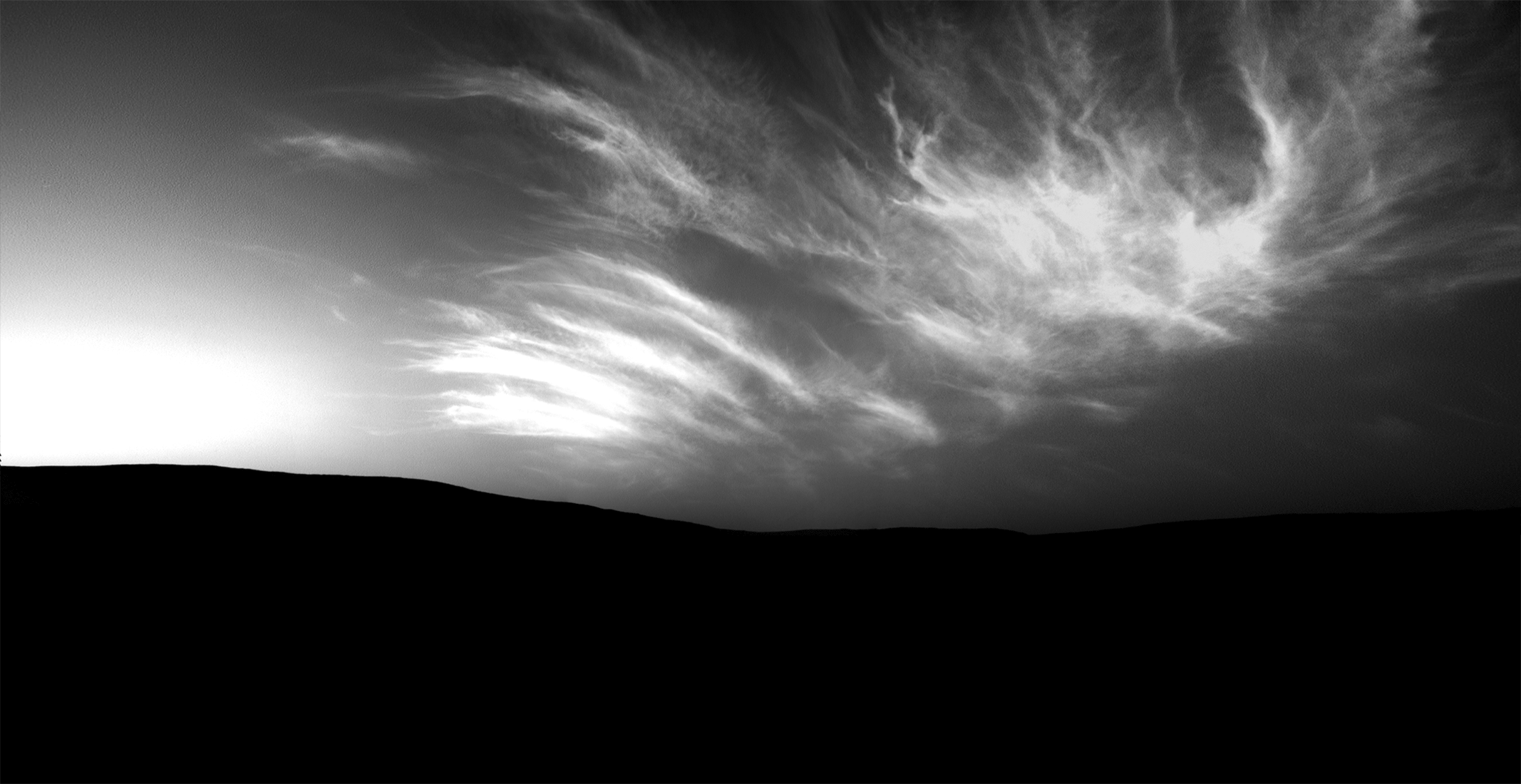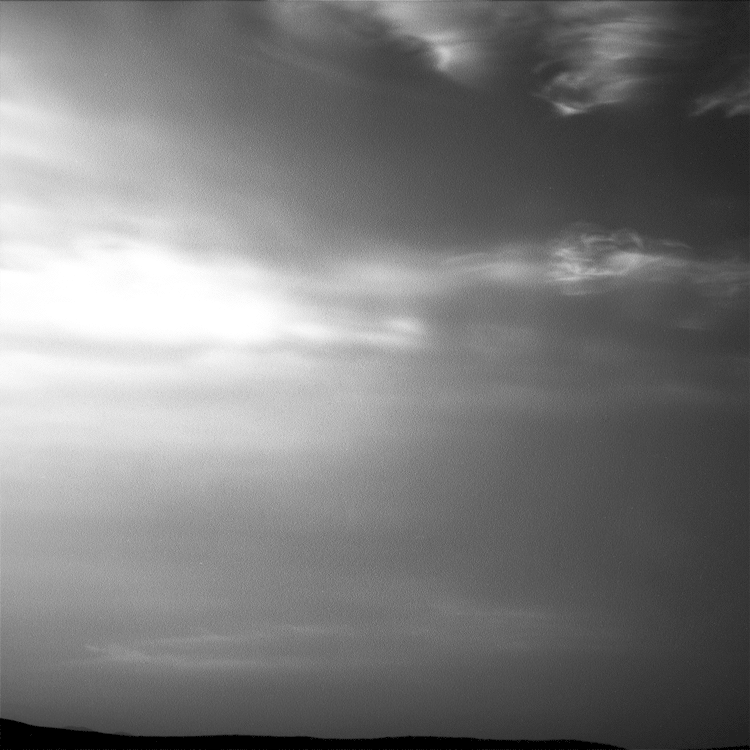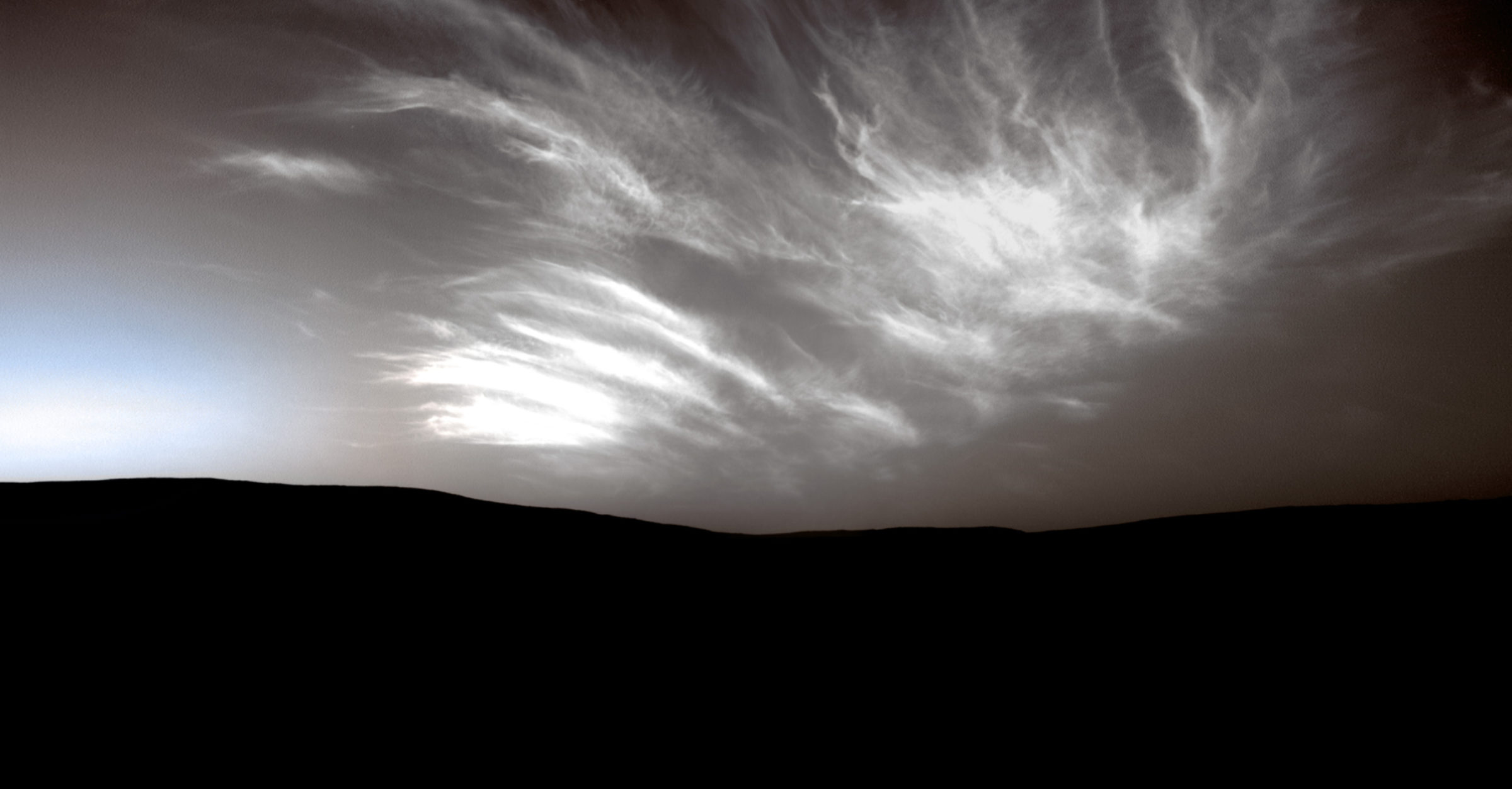Emily Lakdawalla • May 28, 2019
Curiosity Gazes Upon Noctilucent Clouds Over Gale Crater
Just imagine this scene. You’re on Mars, in Gale crater, with Curiosity. The sun has just set, and the temperature is falling rapidly. You look up. You see brilliant, wispy clouds, still sunlit even though night has fallen where you’re standing. They’re high in elevation, so the Sun can still reach them. As you stand there, skygazing, feeling increasingly chilled, the noctilucent clouds waft along in the Martian air, dimming from east to west as the Sun sets on them.
Curiosity has, in fact, been looking up after sunset recently. It’s been taking Navcam photos, and the camera’s reasonably broad field of view (45 degrees) lets it take in a lot of clouds, giving all of us back on Earth a chance to see them, too. Here is one spectacular set, which included 3 sets of 3 frames that can be assembled into a panoramic animation, here assembled by Justin Cowart:

Seán Doran took that animation and tweened (interpolated) frames in between the 3 key frames, making this smooth video:
Noctilucent Clouds in Motion, Curiosity Sol 2410 (tweened) Curiosity looked upward after sunset on sol 2410 (18 May 2019) and saw wispy cirrus clouds in motion, high above the ground. Because of their high elevation, the clouds are still sunlit, making them noctilucent clouds. The original data included 3 sets of 3 frames, assembled into a 3-frame animation by Justin Cowart. Seán Doran interpolated among those 3 frames to make this smooth video.Video: NASA / JPL-Caltech / Justin Cowart / Seán Doran
It’s quite something. And it’s not a unique occurrence. Curiosity has taken other sets of images, including one just yesterday that doesn't animate but does cover a huge amount of the sky:
Soirée nuageuse sur Mars pour le rover Curiosity @MarsCuriosity. C'est l'une des premières fois qu'on a une vue aussi large et détaillée des nuages martiens depuis la surface.
— Thomas Appéré (@thomas_appere) May 28, 2019
Photo prise le 25 mai 2019.https://t.co/qal4fbTSvK pic.twitter.com/EKrHZIAOaQ
Prior views pointed at only one location in the sky, so they don’t have quite the impact of the panoramas. On the plus side, they contain more time steps. Here is one example.

Because they are taken after sunset, Navcam requires long exposures to produce these images: 10 to 70 seconds. These unusually long exposures emphasize imperfections within the camera, making the images look “snowy”, especially the 70-second exposure. It doesn’t matter. They’re still stunning.
What could make the view more stunning? Color. Navcam is a monochrome camera, so it can’t do that. Curiosity's color Mastcam could take color pictures, but with a much narrower field of view, denying us the panoramic landscape. But unlike Curiosity, we humans can imagine what that would look like (with help from other cameras that have taken color sunset views before), and create artificial color, rendering a view of what it might look like if we could see these clouds with our own eyes.

P.S. Yes, Mars' sunsets really are blue.
Support our core enterprises
Your support powers our mission to explore worlds, find life, and defend Earth. You make all the difference when you make a gift. Give today!
Donate

 Explore Worlds
Explore Worlds Find Life
Find Life Defend Earth
Defend Earth

